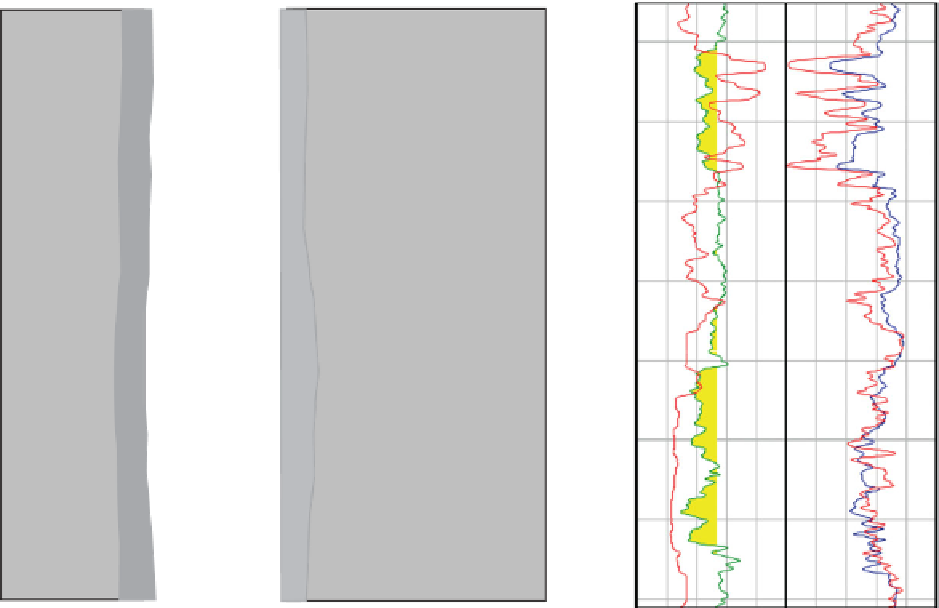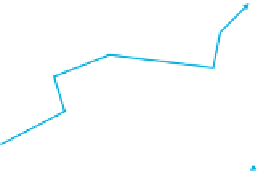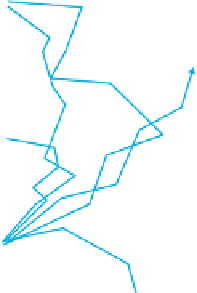Geology Reference
In-Depth Information
or sonic log is available then the amount of confident
data analysis that can be done will be minimal. This
would equally apply if there is significant editing and
log prediction required.
range are scattered by the electrons in the atoms of
the formation material; the resulting attenuation is
proportional to the bulk density (after correction for
the anomalously high scattering ability of the hydro-
gen atoms present in water). The logging tool con-
tains a gamma ray source (usually
137
Cs) with two or
more detectors at short and long spacing from the
source. The density tool is pressed against the bore-
hole wall with an arm that extends from the back of
the tool, keeping it in position (
Fig. 8.40a
). In this
mode the primary long spaced detector records scat-
tered gamma rays that have travelled through the
formation. Usually contact will not be perfect, how-
ever, with a thickness of drilling mud or mudcake
(clay particles deposited from the drilling mud)
between the tool and the formation. This
8.3.2 Acoustic logs
Given the importance of sonic and density logs to
seismic modelling the following presents a discussion
of how the tools work as well as practical consider-
ations important in data analysis. Much more detail
can be found in petrophysics textbooks (e.g. Ellis and
Singer
2007
; Rider and Kennedy,
2011
).
8.3.2.1 Density logs
Density is measured from the interaction of gamma
rays with the formation. As they pass through the
formation, gamma rays in an appropriate energy
'
effect leads to low values of density but is corrected
'
stand-off
GR (api)
Density (g/cc)
CAL (ins)
a)
b)
Drho (g/cc)
0
150
1.95
2.95
10
20 -0.35
0.25
Rock
Density
sonde
Mudcake
Borehole
Long spaced
detector
Stabilising
arm
Short spaced
detector
Gamma ray
diffusion
Source
179
Figure 8.40
Density logging; (a) tool configuration in the borehole (modified after Tittman and Wahl,
1965
), (b) an example of
compensation in bad hole.

























